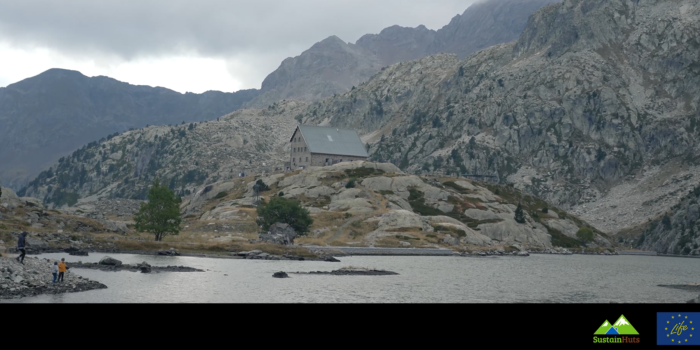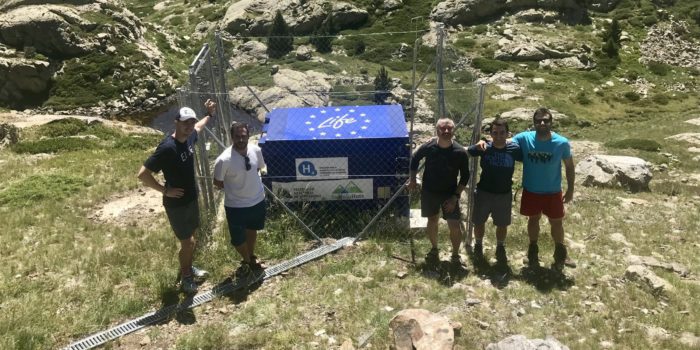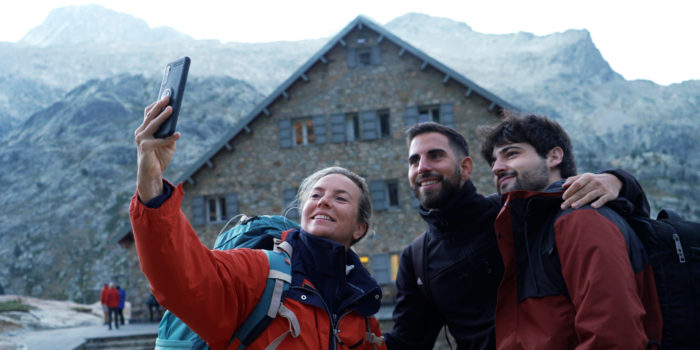SustainHuts project continues to contribute to improving air…

Discover our final guidelines on the project
We have prepared the following guidelines on the different results obtained in the project with the aim of
being useful for its replication in other facilities.
The aim of this guide is to present, on the one hand, the most common renewable energy production technologies in terms of their application to mountain huts, complementing this description with renewable energy storage technologies, which is a very important aspect to take into account in this type of facility. In addition, and as a particular case of energy storage, the role that hydrogen can play as a seasonal storage of large amounts of renewable energy is described. This guide also includes a section dedicated to the description of the methodology used in this project to carry out the energy analysis in the facilities.
The aim of this guide is to present the technologies finally installed in the huts and the process that was followed from the initial idea of improving the sustainability of these facilities to the technologies finally installed, with the ultimate goal of promoting their reproducibility to other huts and similar isolated facilities. The process starts with a meeting between the technicians of the partners, the mountain federations and clubs, and the mountain hut keepers in which the potential improvements in the mountain huts are discussed and commented. The process ends with the installation of all the technologies, their testing and demonstration, the training that may be required by the keepers, and the monitoring protocol in place.
After the evaluation of the improvements, 30 technologies were finally selected, including renewable production and efficiency, hydrogen storage, and thermal insulation. This guide presents the technologies related to energy production and storage by means of hydrogen. This guide first presents the technologies implemented in the field of renewable energy production, describing the initial situation in each hut as well as the implemented solution.
C7.3 “Final guideline: Energy efficiency and advanced materials applied to mountain huts”
As a continuation to the previous guideline (C7.2) this guide presents the technologies related to efficiency improvement and thermal insulation. This guide first presents the technologies implemented in the field of energy efficiency, describing the initial situation in each hut as well as the implemented solution. In another chapter, a study of the art that has been elaborated in the project in relation to new thermal insulation materials is presented. Finally, the insulation materials finally used are listed, as well as the application cases identified and implemented.
C7.4 “Final guideline: LIFE SUSTAINHUTS lessons learnt report”
Throughout the different development phases of the project, a great deal of knowledge has been acquired based on the experiences that have occurred during the life cycle of the project. From the collection of information on the reference situation of the huts, through the evaluation and study of possible alternatives, to finally collecting materials, planning their installation, and carrying out the assembly, commissioning, and operation of the technologies. From all these phases, a reflection and analysis of the factors that have affected the project, both positively and negatively, has been carried out. This document presents all the knowledge acquired, classifying it in different categories and by country (Spain, Italy, France, Slovenia), and presenting in a dedicated chapter the learning process in terms of obtaining permits and installation licences.
C7.5 “Final guideline: LIFE SUSTAINHUTS project results report”
This document is a final guide containing all the results obtained in SUSTAINHUTS project, with the aim of being useful for its replication in other facilities, to publicise the technologies installed and potentially applicable, as well as the expected results depending on the type of facility and the particularities of each mountain hut. In order for this document to make sense in itself and so that it is not necessary to consult the other guides produced in the project, the following is presented throughout the document:
- The table of the huts included in the project together with their location
- The table with the technologies installed in each hut, giving a total of 29
- The results of CO2 emissions avoided, fuel savings and renewable energy produced both accumulated during the entire execution of the project and normalised to a standard year
- Results obtained for other parameters that in some way reflect the environmental impact obtained, such as energy efficiency, reduction in the number of helicopter trips, as well as a specific assessment of such a novel technology as the storage of seasonal renewable energy in the form of hydrogen.
- Finally, the main outcomes of the project are presented.
It can be concluded that the technologies implemented in the project have been successful, achieving to a large extent the planned objectives, and clearly improving both the energy management and the sustainability of all the huts.





